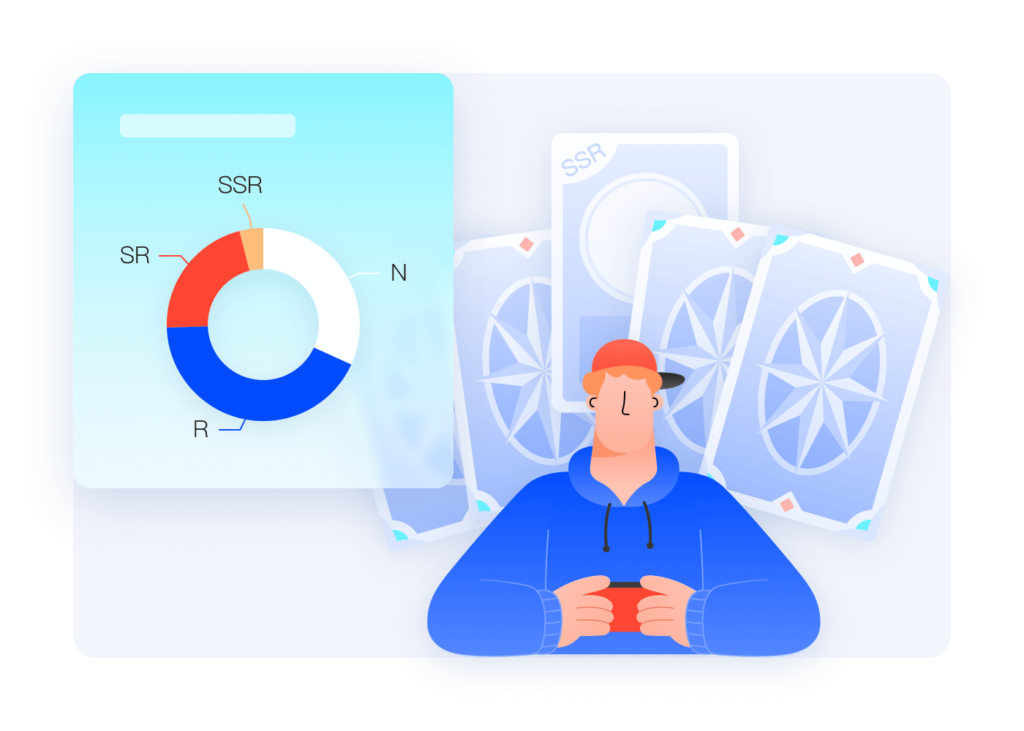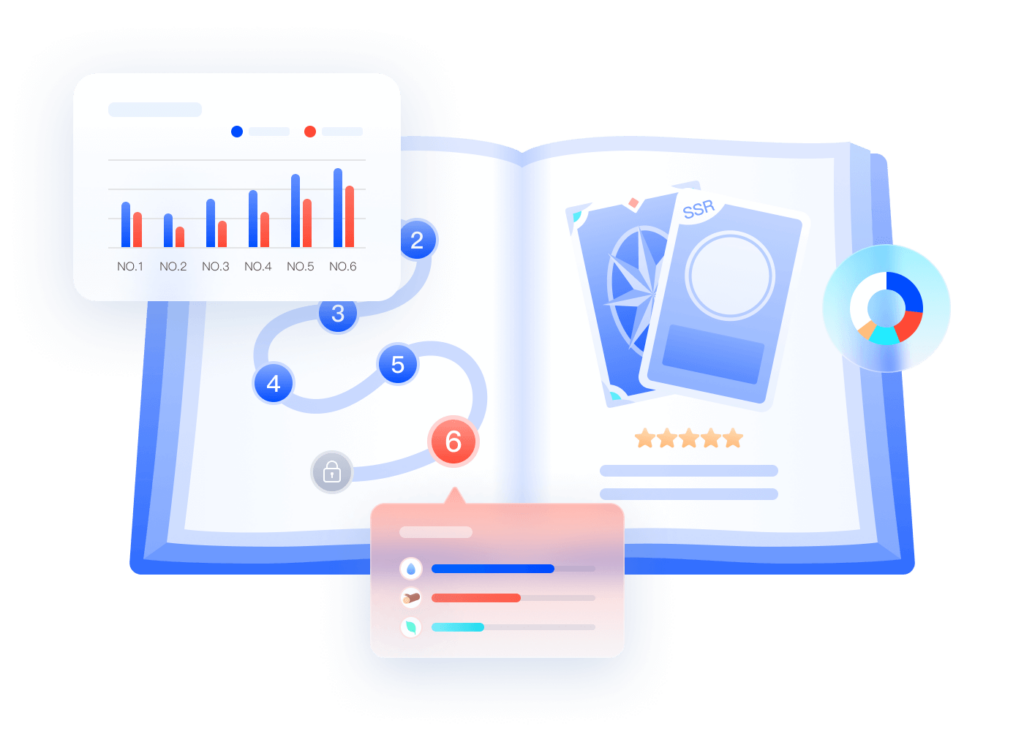Card Games
Build a balanced and orderly card ecosystem
Know the progress distribution of card development for different card qualities
Analyze the participation and output of different card pools
Evaluate the buff effect of different card combinations
By data tracking, you can gather insights on the acquisition rate and usage rate of each card, and their numerical value in different combinations, to understand which kind of card is preferred by users. Adjust the cards accordingly based on their quality, level, values, etc. to achieve the desired outcome.


Measure user engagement in card drawing
Assess the popularity of different types of cards
Track user behaviors after card drawing (retention, payment, etc.)
Analyze the core player group’s pursuit of card collection, including numerical values, collecting preferences, emotional connections, and other related aspects.
Through analysis of drop-off users, track key behaviors performed before drop-off, explore their common behaviors, such as participating in activities, drawing resources, advancing level progress, etc., and go beyond surface-level data to analyze why they drop-off and verify your strategy by first-party data.
Balance level progression and main story development
Track users behavior data at each level
Understand the overall pace of in-game resource generation
Optimize numerical setup combined with the main storyline & cultivation status
Composition analysis allows you to understand card cultivation status of users at different levels, and evaluate whether their progress is matched with the main storyline. Quickly create cohorts to learn about their resources and identify whether they are reaching the desired outcomes, so you can take action quickly.

Card Games Using ThinkingEngine
Join over 1200 successful game development companies in making data-informed decisions that help them meet and exceed their goals
